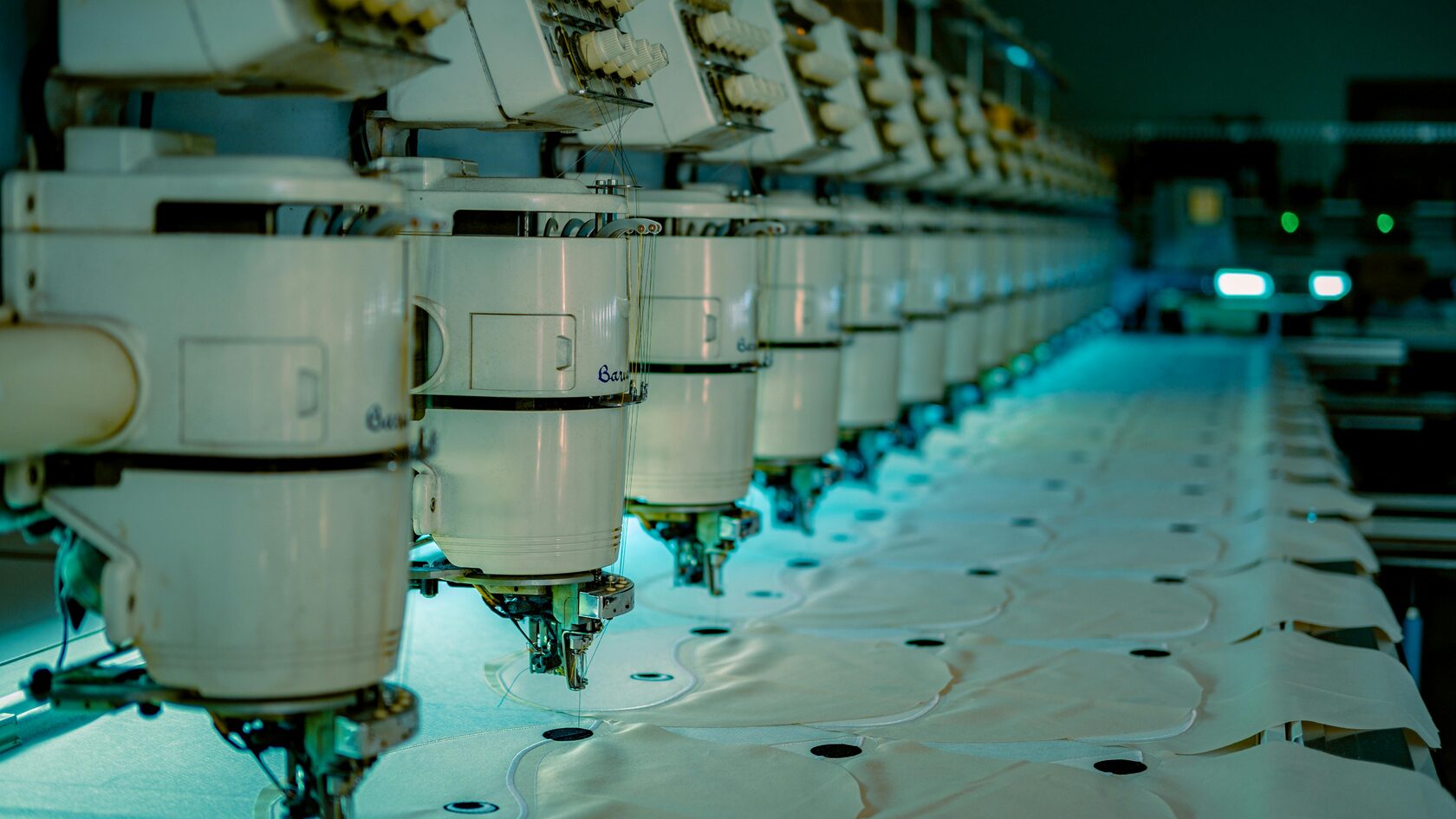Introduction StitchEx embroidery machines have revolutionized the way individuals and businesses approach embroidery by offering precision, ve
Introduction
StitchEx embroidery machines have revolutionized the way individuals and businesses approach embroidery by offering precision, versatility, and efficiency. Whether you are a hobbyist eager to create personalized gifts or an entrepreneur launching a full-scale embroidery business, mastering StitchEx is critical for success.
This extensive guide will explore every angle—from design fundamentals and machine setup to marketing strategies and future industry trends—providing you with a detailed roadmap to unlock the full potential of your StitchEx machine.
Must visit: tradeinfinite

Chapter 1: Getting to Know Your StitchEx Machine Inside and Out
Understanding Your Machine’s Features
StitchEx offers a variety of models tailored for different needs:
- Single-needle machines: Ideal for beginners and small projects.
- Multi-needle machines: Designed for commercial operations with up to 15 needles for rapid color changes.
- Specialty machines: Capable of embroidery on hats, sleeves, and other challenging surfaces.
Key features to familiarize yourself with include:
- Maximum embroidery area dimensions
- Thread capacity and color options
- Supported file formats (such as DST, PES, EXP)
- Connectivity options: USB, Wi-Fi, or LAN
- Built-in touchscreens and software capabilities
Setting Up Your Workspace
An efficient workspace promotes productivity and quality:
- Ensure a sturdy, vibration-free table
- Good lighting with adjustable task lamps
- Organize tools: scissors, needles, threads, hoops, and stabilizers
- Computer or tablet setup for design editing and transfers
- Proper ventilation for thread dust and cleaning solvents
Chapter 2: Mastering Embroidery Design with StitchEx Software
Design Creation Workflow
- Importing designs: Start with vector or raster images; convert them into embroidery files via digitizing.
- Digitizing: Use StitchEx’s software to manually create stitch paths or auto-digitize images.
- Optimizing stitch types: Satin for edges, fill stitches for larger areas, and running stitches for outlines.
- Color sequencing: Arrange thread colors logically to minimize needle changes and reduce production time.
- Preview and simulation: Always use the preview tool to simulate stitching and detect potential issues.
Tips for Perfect Digitizing
- Use clear, high-contrast images for auto-digitizing.
- Avoid too many tiny details that won’t translate well to thread.
- Keep stitch density balanced to prevent puckering or thread breakage.
- Add proper underlay stitches for fabric support.
Customization and Editing
- Resize designs proportionally without distortion.
- Add text using embroidery-friendly fonts.
- Combine multiple designs into a single pattern.
- Mirror or rotate elements to create symmetrical or dynamic compositions.
Chapter 3: Fabric and Thread Selection
Selecting Fabric Types
- Cotton and cotton blends: Excellent for durability and ease of use.
- Polyester fabrics: Popular for uniforms and sportswear due to stretch and durability.
- Knits and stretch fabrics: Require specialized needles and stabilizers to maintain fabric integrity.
- Denim and leather: Thick fabrics that need heavy-duty needles and slower stitching speeds.
- Delicate fabrics: Use fine needles and light stabilizers to prevent damage.
Stabilizer Use
- Tear-away stabilizers: Good for stable fabrics.
- Cut-away stabilizers: Best for stretch and lightweight fabrics.
- Water-soluble stabilizers: Ideal for sheer and lace fabrics.
- Adhesive stabilizers: Help stabilize tricky or slippery materials.
Thread Choices
- Polyester: Durable, resistant to UV and chemicals.
- Rayon: Offers a shiny finish but is less durable.
- Cotton: For a natural look and feel.
- Metallic and specialty threads: For decorative accents but require slower machine speeds.
Chapter 4: StitchEx Machine Operation and Maintenance
Daily Operation Checklist
- Power up and warm up the machine.
- Check thread paths and replace needles if necessary.
- Hoop fabric carefully to avoid slippage.
- Load design files correctly and confirm color sequences.
- Run a test stitch on similar fabric before actual production.
Common Troubleshooting
- Thread breaks: Check needle condition, thread tension, and path cleanliness.
- Skipped stitches: Replace needles and check machine calibration.
- Puckering: Adjust tension, stabilize fabric properly, and check stitch density.
- Misaligned designs: Confirm hooping accuracy and machine calibration.
Maintenance Best Practices
- Clean lint and dust daily from bobbin area and thread paths.
- Oil moving parts according to manufacturer instructions.
- Regularly update firmware and software.
- Schedule professional servicing annually or biannually.
Chapter 5: Scaling Your Embroidery Business with StitchEx
Market Research and Positioning
- Identify niches: custom apparel, corporate branding, gifts, fashion, or home décor.
- Analyze local competition and pricing.
- Tailor services to customer needs—personalization, rush orders, or bulk production.
Branding and Marketing
- Develop a strong brand identity with a memorable logo and consistent visuals.
- Use social media platforms (Instagram, Facebook, TikTok) to showcase your work.
- Run promotions and giveaways to grow your customer base.
- Build an engaging website with e-commerce capabilities for direct sales.
Pricing Strategies
- Calculate costs: materials, labor, machine depreciation, utilities, and overhead.
- Set competitive yet profitable pricing.
- Offer discounts for volume orders or repeat customers.
- Provide clear quotations and transparent pricing policies.
Customer Relationship Management
- Communicate clearly and promptly.
- Provide proofs and mockups before production.
- Handle complaints professionally and offer solutions.
- Collect reviews and referrals to build trust.
Chapter 6: Advanced StitchEx Techniques for Professional Results
3D Puff Embroidery
- Use foam underlay to create raised effects.
- Digitize designs to cover foam without excessive thread buildup.
- Use slower stitching speeds to prevent foam damage.
Appliqué Embroidery
- Attach fabric patches using satin stitches.
- Use cut-away stabilizers for support.
- Digitize clean edges for smooth appliqué borders.
Specialty Threads and Effects
- Use metallic or glow-in-the-dark threads with appropriate needles.
- Combine thread types for textured effects.
- Experiment with variegated threads for dynamic color shifts.
Chapter 7: Workflow Optimization and Production Efficiency
Batch Processing
- Group similar orders to reduce setup time.
- Use multi-needle machines to switch colors without stopping.
- Pre-hoop common fabric sizes.
Digital File Management
- Organize designs by client, type, and date.
- Use version control for updated designs.
- Backup designs regularly in multiple locations.
Inventory and Supply Chain Management
- Track thread colors, needles, stabilizers, and fabrics.
- Maintain reorder levels to avoid downtime.
- Source reliable suppliers for quality and consistency.
Chapter 8: Embracing Technology and Future Trends
E-commerce and Online Customization
- Offer online design customization tools for customers.
- Integrate StitchEx software with online ordering platforms.
- Use digital marketing to target niche markets.
Sustainability in Embroidery
- Shift to organic and recycled fabrics and threads.
- Reduce waste with efficient digitizing.
- Use energy-efficient machines and eco-friendly packaging.
AI and Automation
- Use AI for auto-digitizing and design suggestions.
- Employ machine learning to optimize stitch paths and reduce thread consumption.
- Automate order tracking and production scheduling.
Hybrid and Mixed-Media Embroidery
- Combine embroidery with laser cutting, printing, or 3D printing.
- Explore smart textiles and wearable tech integration.
FAQs
Q1: Can I embroider on hats and curved surfaces with StitchEx?
A1: Yes, with specialized cap hoops and proper fabric stabilization.
Q2: What embroidery file formats does StitchEx support?
A2: Common formats include DST, PES, EXP, JEF, among others.
Q3: How do I prevent thread breakage?
A3: Use high-quality thread, correct tension, clean machine parts, and replace needles regularly.
Q4: How often should I update my machine’s software?
A4: Regularly check for updates on the manufacturer’s website and install them as they become available.
Q5: What maintenance should I perform weekly?
A5: Clean the bobbin case, oil moving parts, and inspect the needle bar and thread paths.
Q6: How can I improve my digitizing skills?
A6: Practice with simple designs, use tutorials, join embroidery forums, and experiment with StitchEx’s software features.
Conclusion
Mastering StitchEx machines unlocks tremendous creative and commercial potential. From learning digitizing techniques and fabric handling to scaling your business and embracing future trends, the journey requires commitment and continuous learning.
With a strong foundation and strategic approach, StitchEx users can elevate embroidery from a craft to a thriving enterprise, delighting customers and expanding market reach with every stitch.




COMMENTS